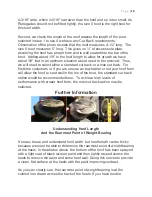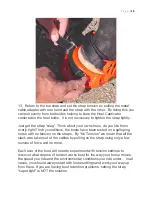Содержание Hoof Boots
Страница 13: ...P a g e 13 3 Pull the Heel Captivator down 4 Pick up the hoof and insert the hoof into the boot ...
Страница 15: ...P a g e 15 7 Pull the Heel Captivator well up onto the heel bulbs 8 Place the hoof onto the ground ...
Страница 58: ...P a g e 58 Yellow Gold Arizona Copper Burgundy Blitz ...
Страница 59: ...P a g e 59 Metallic Jade Choco Latte Black Knight ...






































